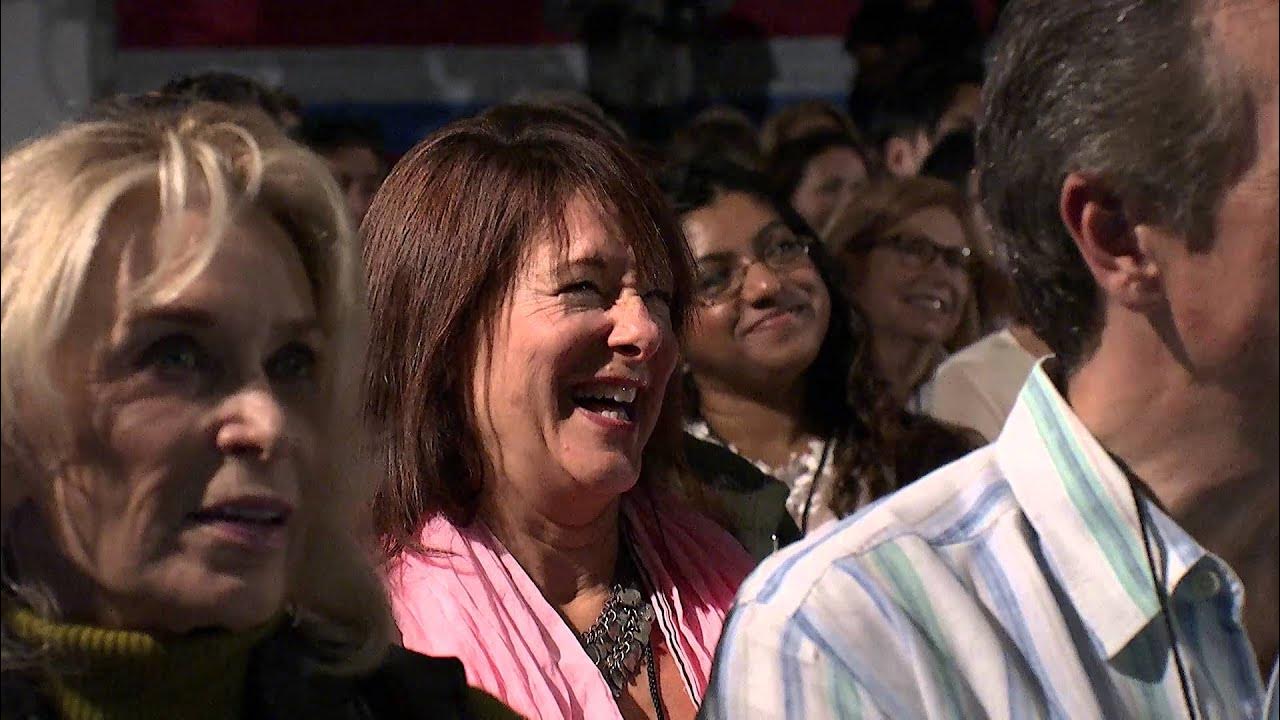Tal Golesworthy: How I repaired my own heart
Summary
TLDRIn a groundbreaking presentation, a process engineer shares his journey of overcoming Marfan syndrome through innovative engineering solutions. After discovering his dilated aorta, he rejected traditional surgical methods in favor of a revolutionary approach: externally wrapping the aorta with a bespoke textile mesh. This personalized medicine not only eliminated the need for anticoagulation therapy but also demonstrated the power of multidisciplinary collaboration between engineers and medical professionals. By fostering effective communication and overcoming institutional barriers, the team achieved remarkable progress, paving the way for a new, less invasive treatment that significantly enhances patient quality of life.
Takeaways
- 😀 The speaker is a process engineer who has developed a novel treatment for aortic dilation due to Marfan syndrome.
- 🧬 Marfan syndrome is an inherited disorder that can lead to serious cardiovascular issues, including the dilation of the ascending aorta.
- 🔍 Traditional surgery for aortic dilation involves significant risks, including the use of an artificial heart-lung machine and long-term anticoagulation therapy.
- 🔧 The speaker conceptualized an external wrap for the aorta to provide support without removing the patient's natural tissue.
- 🖨️ The process began with 3D imaging to create a CAD model of the aorta, leading to the production of a custom implant using rapid prototyping techniques.
- 💉 The new procedure is less invasive, requiring only two hours of surgery and avoiding the need for heart-lung bypass or total body cooling.
- 🩺 The speaker emphasizes the importance of multidisciplinary collaboration between engineers and medical professionals to achieve innovative solutions.
- 📉 The project faced significant challenges, including institutional barriers, jargon differences, and funding issues between medical and engineering fields.
- 🏆 Despite skepticism from some medical professionals, the new treatment has shown excellent outcomes with no complications in over 30 patients.
- 🌍 The success of this project demonstrates the potential for rapid progress and cost-effective solutions in healthcare through interdisciplinary teamwork.
Q & A
What condition does the speaker have, and how does it affect them?
-The speaker has Marfan syndrome, an inherited disorder that affects connective tissue, leading to complications such as a dilated ascending aorta.
What was the initial treatment option suggested for the speaker's aortic dilation?
-The initial treatment involved a surgical procedure that included opening the chest, stopping the heart, and replacing the aorta with a plastic valve and a plastic aorta, along with a lifetime of anticoagulation therapy.
What innovative approach did the speaker propose for treating aortic dilation?
-The speaker proposed an external wrapping solution for the ascending aorta to provide stability without the need for surgery involving artificial components or anticoagulation therapy.
How did the speaker develop the model of their aorta?
-The model was developed using magnetic resonance and CT imaging, which provided detailed images that were converted into CAD models and then into solid plastic prototypes.
What was the significance of using bespoke textile mesh for the treatment?
-The bespoke textile mesh is tailored to fit the individual patient's aorta perfectly, representing a significant advancement in personalized medicine.
What challenges did the speaker encounter during the development process?
-The speaker faced challenges including jargon barriers between disciplines, institutional relationships, bureaucratic hurdles, and funding issues.
What advantages does the new treatment method have compared to traditional surgery?
-The new method is quicker, taking only two hours compared to six hours for traditional surgery, and it avoids the need for heart-lung bypass and total body cooling.
How did the speaker’s engineering background contribute to the development of the medical device?
-The speaker's engineering background allowed them to approach the problem as a 'plumbing issue,' using technical skills to innovate and design a practical solution for aortic dilation.
What role did the multidisciplinary team play in the project?
-The multidisciplinary team, which included medical professionals and engineers, was crucial for providing diverse perspectives and expertise necessary for successfully developing and implementing the treatment.
What does the speaker mean by 'obstructive conservatism' in the medical field?
-The term 'obstructive conservatism' refers to the reluctance of some medical professionals to adopt new techniques or treatments, often due to a preference for traditional methods or concerns about change.
Outlines

Этот раздел доступен только подписчикам платных тарифов. Пожалуйста, перейдите на платный тариф для доступа.
Перейти на платный тарифMindmap

Этот раздел доступен только подписчикам платных тарифов. Пожалуйста, перейдите на платный тариф для доступа.
Перейти на платный тарифKeywords

Этот раздел доступен только подписчикам платных тарифов. Пожалуйста, перейдите на платный тариф для доступа.
Перейти на платный тарифHighlights

Этот раздел доступен только подписчикам платных тарифов. Пожалуйста, перейдите на платный тариф для доступа.
Перейти на платный тарифTranscripts

Этот раздел доступен только подписчикам платных тарифов. Пожалуйста, перейдите на платный тариф для доступа.
Перейти на платный тарифПосмотреть больше похожих видео

How to make Projects for Internship & Placement from Scratch | Atlassian, Juspay, BNY Mellon, TCS

Vídeo Apresentação

Nanotechnology: When Less is More | Julia Greer | TEDxManhattanBeach

AI and Connected Brain | Samay Lakhani (US)

Engineering Tomorrow - Electric Vehicles Lab Introduction Video

How to Crack Data Engineering Interviews
5.0 / 5 (0 votes)
